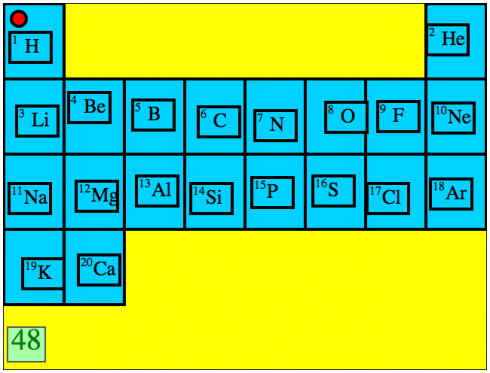Based off of Mozilla’s nice introduction to basic animations on the web, I made as simple of an animation as I could using the Canvas element in HTML. It just contains a static, red rectangle, and a green sphere that slowly moves across the canvas. This should serve as a simple introduction for my students who want to make online games.
<!DOCTYPE html>
<html lang="en" dir="ltr">
<head>
<meta charset="utf-8">
<title></title>
</head>
<body>
<div id="gameBoard"></div>
</body>
<script type="text/javascript">
canvas_width = 400;
canvas_height = 300;
//create canvas
cvs = document.createElement("CANVAS");
cvs.height = canvas_height;
cvs.width = canvas_width;
document.getElementById("gameBoard").append(cvs);
ctx = cvs.getContext("2d");
cx = 10;
cy = 20;
window.requestAnimationFrame(animate);
function animate(){
//clear the canvas
ctx.clearRect(0, 0, canvas_width, canvas_height); // clear canvas
//set location of the circle
cx += .2;
cy += .1;
//recreate the canvas (every time)
ctx.fillStyle = '#ff0000';
rect = ctx.fillRect(0, 0, 20, 100);
ctx.beginPath();
circ = ctx.arc(cx, cy, 10, 0, 2 * Math.PI);
//ctx.stroke();
ctx.fillStyle = '#00ff00';
ctx.fill();
window.requestAnimationFrame(animate);
}
</script>
</html>
This uses plain HTML and Javascript, with no additional libraries.
